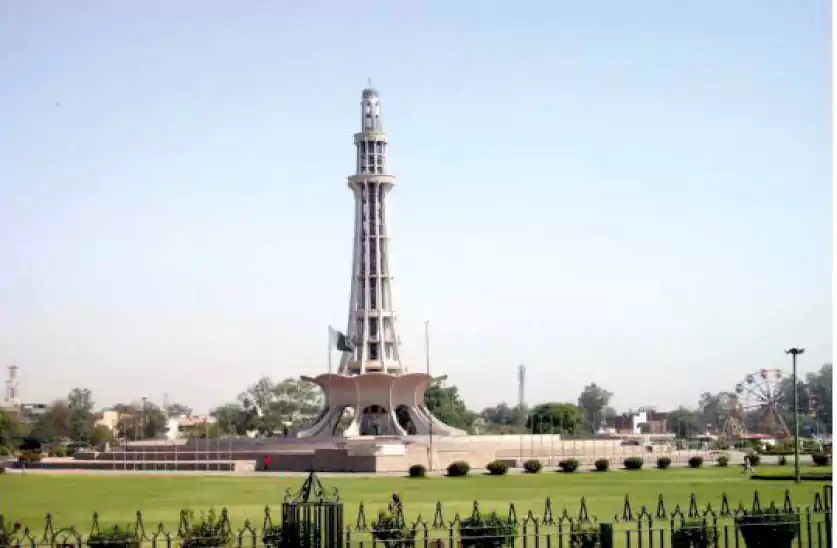The Lahore Resolution monument, popularly known as Minar-e-Pakistan, is a memorial erected to commemorate historic adoption of the Lahore Resolution, commonly known as Pakistan Resolution, during the 27th general session of the All India Muslim League on March 22-24, 1940.
The Pakistan Resolution demanded a separate homeland for the Muslims of Hindustan, as was propounded by poet, philosopher Allama Dr. Muhammad Iqbal in his presidential address at Allahabad in 1930. Construction of Lahore Resolution monument, sometimes referred to as Liberty Tower of Pakistan, was decreed in the 1960s and construction work started on March 23, 1960 while it was opened to public gaze in October 1968. The task was assigned to the Russian-born Pakistan architect, civil engineer Naseeruddin Murat Khan.
The selection of the site for 27th general session of the All India Muslim League at the Minto Park (named after Governor General of India between 1807-1813) is significant in the sense that the Muslim seers picked a place which faced historic Mughal architectural masterpieces like the Lahore Fort and the Badshahi Masjid. Both these architectural heritage sites were reminiscent of the heydays of the Muslim dominance in Hindustan. The Minar-e-Pakistan is built on a platform shaped like a flower with eight petals and the 70-meter-high tower, protruding from the centre and culminating with an onion-shaped dome and a pinnacle. The unfolding flower-petals represent happiness and abundance besides symbolising wealth, fortune and prosperity, which the independent state of Pakistan promised to its inhabitants. The flowers also symbolise purity and the literal meanings of the word Pakistan mean Land of the Pure. Director Conservation Lahore Fort Najam-us-Saqib believes that Minar-e-Pakistan has been designed on the pattern of a minaret an essential feature of a mosque. The minaret also stands for unity and Islamic faith. It embraces Islam and Islamic culture in all aspects as the minaret culminates with a dome and a pinnacle. Deciphering dome symbolism, Prof Mazhar Moeen of the Punjab University said it is significant that Minar-e-Pakistan has an onion-shaped dome and a pinnacle at the top: this type of dome was popularised by the Mughals in the South Asia and is known as the Arabic architectural style of dome. The small dome reminds the onlookers that the Islamic state of Pakistan exists under the shadow of Allah Almighty. He further said the dome represents perfection, eternity and the heavens, and conveys that sovereignty belongs to Allah Almighty.
Though, he further elaborated, the pinnacle is without a star and crescent on top of the dome, it is a symbol of Islam and presents the country as a place of unity and harmony. With the Pakistan Resolution text inscribed in Arabic, Urdu, English and Bangla on the tablets with the eight petals, the onlooker is provided with an insight into the sovereignty of Islam as a religion, colonial past of the Pakistanis and a unified struggle for independence beyond linguistic differences of its inhabitants. The 99 names of Allah glorify Islam and accept sovereignty of Allah. The mention of Quaid-e-Azam Muhammad Ali Jinnah, Poet of the East Allama Muhammad Iqbal and Sher-e-Bengal (Lion of Bengal) Abul Kasem Fazlul Haq encapsulates the whole political struggle of the Muslims of Hindustan for a separate homeland.









